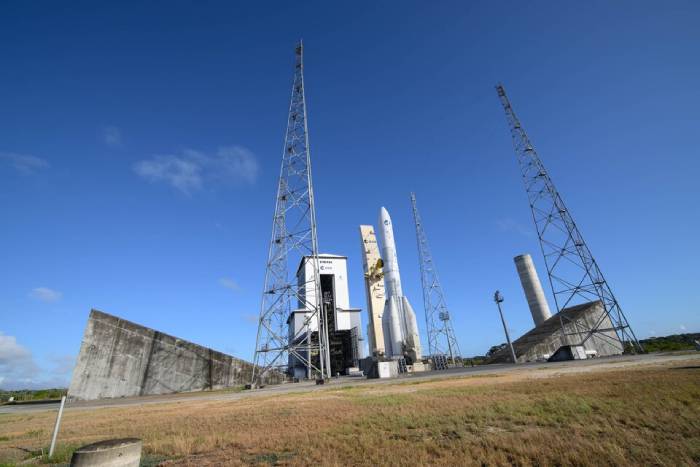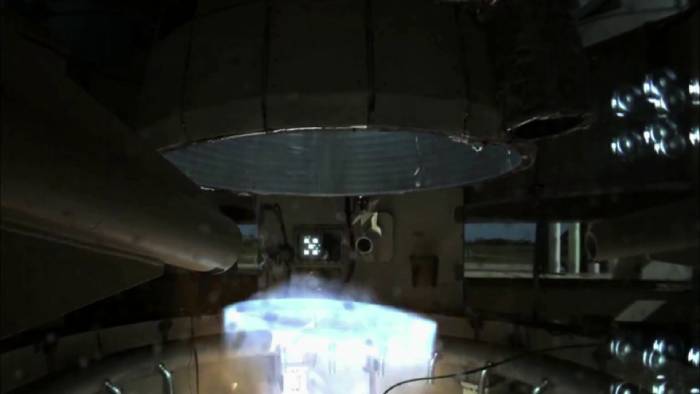ESA’s new Ariane 6 rocket passed a major full-scale rehearsal today in preparation for its first flight, when teams on the ground went through a complete launch countdown followed by a seven-minute full firing of the core stage’s engine, as it would fire on a launch into space.
For this rehearsal, the boosters were not ignited so Ariane 6 stayed firmly on the launch pad at Europe’s Spaceport in French Guiana, as planned.

The engine-fire trial reenacts how the Ariane 6 core stage will fire during a normal flight into space. Once complete the main engine would shut down and the core stage would separate from the upper stage, which would then take over propulsion and complete its mission.
The trial, conducted with a test model on the launch pad at Europe’s Spaceport in French Guiana, was the longest ‘full-stack’ run yet for Ariane 6’s lower liquid propulsion module with a Vulcain 2.1 engine.
“The teams from ArianeGroup, CNES and ESA have now run through every step of the rocket’s flight without it leaving Earth,” says ESA’s Director General Josef Aschbacher.
“This milestone rehearsal comes after years of designing, planning, preparing, building and hard work from some of the finest space engineers in Europe. We are back on track towards resecuring Europe’s autonomous access to space. Well done to all involved!”
The Vulcain 2.1 engine burnt through almost 150 tonnes of propellant in the Ariane 6 core stage tanks – liquid oxygen and liquid hydrogen, the latter supercooled to temperatures below -250°C. Vulcain 2.1 is an evolution of the Vulcain 2 engine which made Ariane 5 Europe’s most successful launch system to date. The upgrade has a simplified and cheaper design, and new technology in the engine nozzle and ignition system has been moved from the engine to the launch pad structure, to make the stage perform better and cost less.

It took just over two hours and required teams of people and delicate operations to load the rocket’s central core with fuel. The filling operations were performed during a long countdown that included other qualification tests, similar to the previous rehearsals this year. For fidelity and to guarantee launcher stability, the upper stage tanks were also fueled – even though the upper stage engine only kicks in once in orbit after separation from the main stage and so was not fired during this ground test.
The launch pad – operated by France’s space agency CNES – used its water deluge system to temper the heat from the engine.
ESA’s Director of Space Transportation, Toni Tolker-Nielsen, added his vote of confidence in the teams across Europe working to bring Ariane 6 to service: “A huge thanks to all of our dedicated colleagues who are committed and working tirelessly to see this rocket fly.”

The test followed a shorter burn in September (known as CTLO1) when Ariane 6’s tanks were filled and its Vulcain 2.1 engine briefly ignited and switched off, and the filling and draining test executed in October (known as CTLO2.1) to check the launch system functions such as draining fuel in the presence of multiple simulated failures.
A last hot-fire test of the upper stage is being prepared and planned for December 2023 at the German Aerospace Center, DLR, Lampoldshausen test centre.
Source : European Space Agency









Be the first to comment on "Hot fire: Ariane 6 ready to rumble"